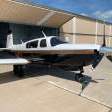Cross country to California
-
Members Online
- Sixstring2k
- Tmooney
- EricJ
- aviatoreb
- 00-Negative
- TerryDubYa
- Shadrach
- LANCECASPER
- Beechbum
- laytonl
- Rmfriday
- hammdo
- 47U
- Rmnpilot
- skydvrboy
- whiskytango
- Planegary
- toto
- TCC
- Julian Bangert
- carusoam
- bcg
- Crawfish
- SeaLand
- ReboTim
- PeytonM
- ArtVandelay
- Nukemzzz
- exM20K
- redbaron1982
- DonMuncy
- lanejacobs84
- carguy4471
- mmcdaniel33


Recommended Posts
Join the conversation
You can post now and register later. If you have an account, sign in now to post with your account.